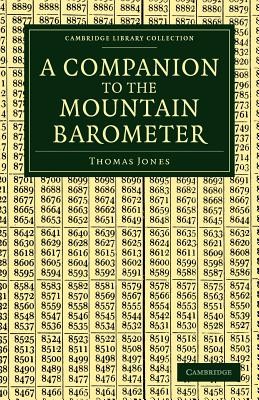
- We will send in 10–14 business days.
- Author: Thomas Jones
- Publisher: Cambridge University Press
- ISBN-10: 1108049370
- ISBN-13: 9781108049375
- Format: 14 x 21.6 x 0.3 cm, minkšti viršeliai
- Language: English
- SAVE -10% with code: EXTRA
Reviews
Description
The Englefield mountain barometer was designed to calculate altitude and was so easy to use that a reading could be taken out of the window of a carriage - provided the horses stood still. Using a bar of mercury, which fell in the lower air pressure of higher altitudes, the barometer gave readings accurate to one thousandth of an inch. By taking a mercury reading at two locations, the owner could work out the difference in altitude between them. In this companion book, first published in 1817, the maker of the new barometer, Thomas Jones, provides tables listing the heights of objects measuring between fifteen and thirty-one inches of mercury. These measurements account for the heights of all mountains in England. He also includes tables that show how to allow for the expansion of both air and mercury. A fascinating book for historical researchers and experimenters in physics alike.
EXTRA 10 % discount with code: EXTRA
The promotion ends in 21d.19:11:27
The discount code is valid when purchasing from 10 €. Discounts do not stack.
- Author: Thomas Jones
- Publisher: Cambridge University Press
- ISBN-10: 1108049370
- ISBN-13: 9781108049375
- Format: 14 x 21.6 x 0.3 cm, minkšti viršeliai
- Language: English English
The Englefield mountain barometer was designed to calculate altitude and was so easy to use that a reading could be taken out of the window of a carriage - provided the horses stood still. Using a bar of mercury, which fell in the lower air pressure of higher altitudes, the barometer gave readings accurate to one thousandth of an inch. By taking a mercury reading at two locations, the owner could work out the difference in altitude between them. In this companion book, first published in 1817, the maker of the new barometer, Thomas Jones, provides tables listing the heights of objects measuring between fifteen and thirty-one inches of mercury. These measurements account for the heights of all mountains in England. He also includes tables that show how to allow for the expansion of both air and mercury. A fascinating book for historical researchers and experimenters in physics alike.


Reviews